Our History
Land Acknowledgement: Second Unitarian resides on the traditional homelands of the Three Fires Confederacy: Ojibwe, Odawa, and Potawatomi. This region has long been a center for Indigenous people to gather, trade, and maintain kinship ties. Today, one of the largest urban American Indian communities in the United States resides in Chicago. We acknowledge that settler colonialism is not just an event of the past but an ongoing reality that we commit to learn about and challenge. For more information, visit the American Indian Center of Chicago.
Second Unitarian Church of Chicago was founded in 1857 and was at that time named Unity Church. The original building was located on the southeast corner of Dearborn and Walton and was burned to the ground during the Chicago Fire in 1871, only two years after construction was completed.
Under the leadership of Rev. Robert Collyer, Unity Church was rebuilt and dedicated in 1873. Twenty-nine years later, Unity Church was sold in the wake of shrinking membership. Rev. Collyer's journey from a humble blacksmith's apprentice in Yorkshire, England, to his pivotal role in our congregation is a testament to the rich tapestry of our history. In an era where most Unitarian preachers hailed from privileged backgrounds, Rev. Collyer's working-class roots resonated deeply with our early members. This connection led them to acquire his cherished Yorkshire anvil, a poignant relic that endured the ravages of the Chicago fire, symbolizing resilience and continuity.
In 1904, under the leadership of Rev. Fred V. Hawley, construction began on the present-day Second Unitarian Church on Barry Ave. The building was constructed in the Prairie style of architecture, which emphasized non-derivative design rooted in nature. The triangular shape of the roof is notable for being an elemental symbol for shelter. Services commenced at the church on Barry Ave in 1906. From the old building were brought the Eli Bates memorial tablet and the bronze bust of Rev. Collyer, both now on the north wall of the sanctuary; the baptismal font; and Collyer’s Yorkshire Anvil.
During WWII, the Unitarian Service Committee adopted the flaming chalice as a beacon of hope and solidarity for those fleeing persecution. This symbol transcends religious boundaries, embodying the spirit of sharing and universal love. Its flame symbolizes not only power but also the resilience necessary to withstand adversity, offering solace in times of turmoil and strife.
In the 1960s, our church faced a challenging period of stagnation. Yet, thanks to the dedication and vision of a small group of members, we stand strong today. Reflecting on this, let's delve into how some of these members found their way to us.
During the early 1960s, Seymour and Esther Fleishman embarked on a search for a church on the north side. Despite not finding Unity listed in the telephone book, their journey led them to engage with various Unitarian options. Eventually, encounters with temporary ministers Ron Engle and Neil Shadle sparked their interest in our congregation.
Meanwhile, in 1968, Rich and Maryann Brandon set out for the Evanston Unitarian church but found themselves running late. A glance at the newspaper revealed a listing for Unity, conveniently closer to their location. Upon arrival, they were greeted by an open front door and a dimly lit sanctuary. It was in this moment of uncertainty that Lyda Palmer emerged, inviting them to join a gathering aimed at saving the church. Reflecting on these serendipitous encounters, it's clear that our community owes much to the Fleishmans' persistence and the Brandons' fortuitous timing.
The regeneration of 2U ushered in an era of progressive thought within the congregation. In the 1980s, during the AIDS crisis, Second Unitarian was one of the only churches in Chicago that opened its doors to mourners to allow funeral services for those who had succumbed to the AIDS epidemic.

